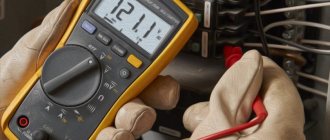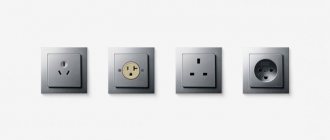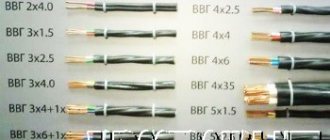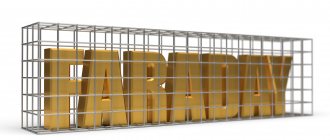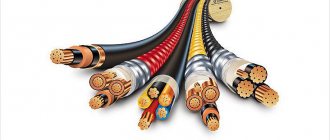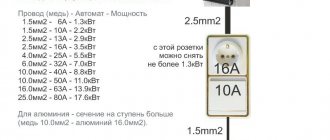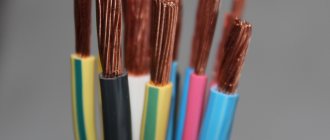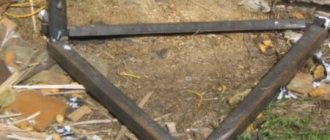Most men who own houses or apartments try to understand more or less all aspects of the household and prefer to carry out many repairs, installations, adjustments and other operations on their own, without involving a specialist. Naturally, if this is not associated with a high danger for yourself, for others, for property or even the entire building. Such completely acceptable actions include, say, installing a new socket or switch. If you de-energize a section of wiring or the entire apartment, if the wires in the socket are normal and of sufficient length, the socket (or switch) itself is purchased new - everything should work out without any problems.
How to extend wires in a socket
But quite often, when it comes to practical implementation, it is precisely the problem that emerges. Namely: the wires coming out of the wall into the socket box broke off due to repeated replacements, or were completely burnt due to insufficiently good contact. That is, there is absolutely no possibility of cutting, stripping the fresh end and tightening it into the socket terminal, since the wires are too short. And this is where the novice home handyman sometimes starts to panic - you can’t put the old socket back in its place, and you can’t install a new one. But there is no need to panic - you just need to find out how to build up the wires in the socket so that you can easily connect it, fix it in place, and all this - in full compliance with safety requirements.
There are several ways to do this - let’s deal with them in order...
What does it mean to extend the wire
Extension means increasing the length of a cable or individual wire. This connection is made not only mechanically, but also electrically. The resulting contact should be as strong as possible and have minimal contact resistance. This is a mandatory requirement for power wiring and input cables.
Wire extension technology
Replacing the power supply cable for an electric stove from the panel
The most reliable, but at the same time, the most expensive option for moving an electric stove socket is laying a new electrical cable from the electrical panel to the required installation location .
At the same time, you get a solid cable that does not have unnecessary connections, damage, wear, etc. is the best way to move a stove socket. In addition, you can install a larger cable and use a more powerful electric stove or hob.
Basic methods of cable extension
There are many ways to extend wiring. They differ in the reliability of contact and complexity of implementation. Most electricians practice the following methods:
- extension using WAGO terminals;
- terminal blocks with screws for tightening;
- classic twisting of cores;
- soldering with tin solders (for copper wiring);
- welding of cores with a graphite electrode;
- connecting sleeves;
- electrical nut;
- extensions using Scotchlocks.
Scotch tape for connecting wires
Additional Information. The connection method is determined by the material of the wire and the current that flows through it. For high powers, soldering and welding of cores is ideal. Low-current circuits can also be connected in other ways. But if this is a high-frequency signal from a TV or Internet cable, then the connection point is made as compact as possible and without kinks.
Using Branch Clamps
Sometimes the problem arises of how to extend the wire in a socket without cutting the cable. To extend the wire, you can use various branch clamps, such as a nut. Used to make branches without breaking the main line. This part is installed at the junction of the main cable with the branch wires, and the first is not cut. The connection is made after removing part of the external insulation. The clamp with the wire just needs to be secured.
In this way, copper and aluminum electrical wires can be connected, but if cables of different materials are connected, the use of a brass intermediate plate is required. It will prevent oxidation.
These clamps consist of:
- dielectric housing (most often made of polycarbonate);
- metal core. It, in turn, consists of two dies (they have grooves into which the wires are inserted) and a plate between them.
All parts of the clamp are connected with bolts.
The easiest way to build up. Old-fashioned method
The simplest of the listed methods of extension is the classic twisting of cores. The wires must be made of the same metal and preferably of equal cross-section. The procedure for building up is as follows:
- Using a knife, remove 30-50 mm of insulation from the ends of the connected wires.
- Twist the stripped wires together along the entire length of the exposed areas. The connection is made as tight as possible.
- Wrap the resulting twist with insulating tape.
Additional Information. If the cable length for a TV, computer and various office equipment is not enough, then it is not necessary to extend them. Typically, these wires are standard and available at a consumer electronics store. And the length that suits you.
Extension of wires going to the outlet
It is necessary to extend the wires for the socket, for example, when moving it closer to the floor under the European standard. It should be remembered that powerful consumers of 1.5-2 kW can be connected to the outlet. Therefore, twisting must be done efficiently. It is recommended to use the following connection methods:
- welding;
- soldering
- connecting sleeves;
Other extension techniques are also suitable. But their reliability and safety do not inspire confidence (we are talking about powerful consumers).
Copper conductors
It is easier to extend copper wire than aluminum. Three methods are suitable: welding, soldering, sleeves. Before connecting, the insulation must be stripped from the cable.
Welding is performed with a special transformer. It is expensive. It makes sense to purchase it for practicing electricians.
Soldering is done using an electric soldering iron, solder and rosin. A cheap way available to everyone. However, it requires minimal skills in working with a soldering iron.
Soldering copper wires
Sleeving (crimping) will require the purchase of a crimping press. The method is suitable for professionals who are willing to spend money on purchasing expensive tools.
Aluminum conductors
Aluminum cable is brittle. Keep in mind that it will easily break if bent repeatedly. The cores can be welded using a transformer with a carbon electrode. A gas burner will also work, but it is more difficult and dangerous.
Sleeving is also suitable. The connecting tube must be made of the same material as the cable core. Aluminum wire cannot be soldered with a soldering iron and solder. Molten tin will not be able to “stick” to the surface of this metal.
Crimping of aluminum wires
Most common situations
So, now we will do the following: we will consider each specific case that can happen in everyday life, and we will immediately provide instructions on how to properly extend the wire and cable.
Situation 1 - A core in the wall or ceiling has broken.
Wires often break in the socket box or at the place where the chandelier is attached. As a result, the devices do not work. It would seem like a simple task - to restore the electricity supply you just need to connect 1 wire. But when stripping, you realized that this would not be possible due to lack of length - the core broke off at the root.
You also have to do this if you decide to move an outlet or switch to another location and one of the wires breaks off during electrical work, you need to act depending on the situation that has arisen.
If the length of the core remaining on the surface is sufficient for extension, install the terminal block and extend the short conductor with the same cross-section and material. If there is a very short conductor left in the wall, break up a section of the wall, release a sufficient length of power cable for extension, strip the core to a metallic color and lengthen the section.
This way you can build up electrical wiring in the junction box or on the ceiling to connect a chandelier or any other lamp (for example, a sconce on the wall).
Situation 2 - You need to extend the cable in the water.
This happens if you need to extend the wire for a submersible well pump. All you need is to connect the spliced cores through the terminal block, and then insulate the extension area using heat shrink tubing, as shown in the photo below. The wire of the submersible pump must be attached to the pipe and cable so that there is no load on it, but additionally take care of the connection point and make a small loop when installing it.
It is recommended to insulate the exposed area using heat-shrink tubing, even if there is a need to extend the wire in the bathroom or outdoors, in order to protect the electrical wiring from high humidity.
Situation 3 - It is necessary to extend the cable to power a powerful electrical appliance in the apartment.
Another situation that needs to be taken seriously is extending the wire to connect powerful household appliances. For example, if you decide to connect an oven, air conditioner or electric stove and the copper conductor at your input has broken off (its cross-section must be at least 6 mm2), then the terminal block will not work, because the current loads from the electrical appliance will be significant. In this situation, it is recommended to extend the wire by soldering, and then carefully insulate the area with electrical tape. This can also be done by lengthening it using crimping sleeves or welding.
Situation 4 - The length of the wire of the temperature sensor of the heated floor system is not enough to connect to the thermostat.
In this case, it is recommended that you first read the instructions supplied with the temperature controller, and if no restrictions are specified, feel free to use the PVA wire and extend the cable for the thermostat yourself, using the same terminal blocks.
Situation 5 - It is necessary to extend the wire of the LED strip for hidden ceiling lighting or the strip itself.
There shouldn't be any difficulties in this situation. There are special connectors that allow you to extend the LED strip (photo below). The main thing is to take into account the requirements that we provided when we looked at tips for connecting an RGB strip with your own hands. The wire to the tape is extended using any of the methods described above.
Situation 6 - The twisted pair cable is damaged.
In this case, you can extend the section with a new twisted pair using twisting or soldering. The main thing is to carefully insulate each extension point so that the exposed wires do not touch each other. It is also convenient to do this using adhesive tape; by the way, network installers love them and often use them.
That's all I wanted to tell you about how to extend a wire in an outlet, under water and in other unusual situations. We hope that now extending electrical cables and wires will not cause you any difficulties when installing electrical wiring yourself!
Extension of other types of wires
Apartment wiring is not limited to sockets, power input cables and lighting. Sometimes you have to deal with other electrical circuits. Therefore, it is necessary to know the nuances and technology of building all possible types of wires.
The putty wire broke
This happens on the section of cable where it exits from the concrete wall into the outlet. If the wire sticking out of the cement is at least 15 mm long, then you should try to extend it using one of the methods described above. More often it happens that the core breaks directly in the wall. In this case, you will have to pick up a hammer drill and clear the wire from the solution to get an end accessible for work.
Extending and relocating the power input cable
Extending the input cable in an apartment is a responsible job. Therefore, you will have to resort to welding. This connection method is the most reliable and nothing better has yet been invented. To weld power wires, a special transformer with a graphite electrode is used. It produces a high current of 100-150 amperes. If there is no transformer, then it is permissible to use a portable inverter-type welding machine. Before connecting the wires, they should be twisted tightly. Then mark the individual wires.
Electrical wiring welding machine
Wiring for high-power electrical appliances
Powerful consumers of electricity are capable of drawing high currents from the network, up to 10-15 A. Examples of such devices: electric stoves, kettles, irons and various stoves. Copper cables are used for connection and extension. When performing work, the following conditions must be observed:
- cross-section of cable cores is at least 2.5 square meters. mm;
- twist connection by welding or soldering;
- use of fabric insulating tape with non-flammable impregnation.
How to do extensions outdoors and in the rain and snow
Sometimes it becomes necessary to extend a wire located in the open air. This could be a SIP cable for powering an extension in a country house or lighting in a garden. In this case, special attention should be paid to sealing the joint.
Cloth tape will not work. Unlike PVC, it is able to absorb moisture from rain. It is convenient to use heat shrink tubes for sealing. Especially those that contain an adhesive layer inside.
Connecting sleeves for SIP cables with heat-shrinkable sleeves
Temperature sensor wires
If a thermocouple or digital three-wire meter is used as a temperature sensor, it is important to maintain the polarity of the connection. Extension wires are usually made of brittle alloys based on aluminum, chromium and copper. For connection it is possible to use simple twisting, screw or WAGO terminals. Soldering may not work. Depends on the specific type of alloy from which the wires are made. By the way, they are thin. Therefore, sleeves and nuts disappear due to too large sizes.
How to extend LED strip
It happens that after installing the LED strip, its brightness is not enough. Therefore, the lighting will have to be increased. When extending the LED strip, you should remember three basic rules:
- When connecting a new fragment, it is necessary to maintain polarity. That is, plus and minus. Usually these are red and black or gray and white wires, respectively.
- The LED tape is cut in special places. They are indicated by the scissors symbol.
- If the LEDs are RGB type, then there are four wires. They should be connected according to color coding. Red to red, green to green and so on.
Connector for extending LED strip
Twisted pair extension
A standard twisted pair cable contains eight wires. They are connected according to colors. The wire strands are thin and copper, so the best connection method is soldering with tin-lead solder. The grandfather's twist is also suitable. However, at high Internet connection speeds this can create problems. It would theoretically be possible to use sleeves and terminal blocks, but in reality it would be expensive and pointless.
Important! When extending signal and antenna wires, you should remember that they have a shielding layer. It is made in the form of copper or aluminum braiding in the outer layers of insulation. Its task is to protect internal conductors from interference. The screen is also subject to electrical connection. This rule applies to UTP wires for the Internet, audio and television cables. If the image ripples, then you should check the integrity of the screen up to the antenna.
Twisted pair connector
Is it possible to connect a microwave oven through an extension cord if there is no outlet near it?
The outlet is far from the microwave, the repairs have already been done, apparently the number of outlets in the kitchen and their location were not calculated correctly.
Can I use an extension cord to connect a microwave?
This is my version, once in a rented apartment, an electric kettle burned down the socket in the kitchen, it turned out that the wire burned right into the wall and in order to fix the socket, it was necessary to remove the tile and hollow out some part of the wall to extend the wire. The owner of the apartment did not do this and the electrician from above disconnected the wire that goes to the outlet.
But somehow we had to connect the multicooker and the microwave, so we decided to buy an extension cord in the store, but not a network cable, which is suitable for computers and is not made of thin Chinese wire, but a reliable, thick extension cord. But there weren’t any of these on sale, so we bought everything separately:
- Copper wire KG 3x2.5 - 4 meters, the price is something in the region of 200-250 rubles.
- 16 Ampere plug, price about 120 rubles.
- 16 Ampere socket, price about 120 rubles.
It turned out to be about 500 rubles.
At home we connected everything and made an extension cord. Maybe we played it safe by purchasing such spare parts, but we used the extension cord for about 1.5 years until we moved to another apartment without any problems.
First, you need to decide on the power of the microwave.
In general, microwave ovens are powerful household appliances and it is advisable to connect them directly to an outlet and not use extension cords.
The power of some microwave ovens exceeds the power of washing machines, for which a separate outlet is provided.
I have a microwave with grill and convection, that is, the microwave oven not only heats the food, but also cooks it; in terms of duration, this process is no less than the washing process of an automatic washing machine.
The power of such a microwave can be 2.5 kW and even much more.
Accordingly, the load in some modes is high.
The best option is to plug a powerful microwave oven (power 2 kW or more) into a separate outlet and without any extension cords, that is, initially provide separate outlets for each powerful household appliance (washing machine, microwave oven, dishwasher, etc.).
But if there are no other options, then in principle you can use an extension cord, but it is important to choose the correct cross-section of the extension cord wire.
So, for example, a copper wire with a cross-section of 1.5 square meters can withstand a load of 4.1 kW, this (and even with a margin) is enough to connect a microwave.
It is better to take the length of the extension cord without a reserve, for example, you need a 2 meter one and buy it, there is no need to take a 3 meter one.
And of course, only a microwave should be connected to such an extension cord, that is, you need an extension cord like this
If you need to connect several household appliances to one extension cord at once, then you need to take into account the total power of the devices and the load on the outlet in which it is plugged in.
Connection of copper and aluminum
It is advisable to avoid such extensions. The best option for connecting copper to aluminum is terminals. Some models contain a special lubricant designed to increase the reliability of the contact and protect it from oxidation.
This connection is made accessible for inspection. It is not recommended to pass large currents through it. When making calculations, it is advisable to select them a step less than the permissible cross-section. If the wire is rated for 16 amps, then you should not pass more than 10 A through it.
For home
In private wooden households, the best option is to install open-type electrical wiring.
In this case, it is recommended to give preference to the domestic cable product VVGng-LS or VVGng, as well as the German high-quality conductor NYM.
In private stone houses, it is allowed to install black VVG conductor, gray NYM cable, white or orange PVS wire, as well as standard white SHVVP.
For external wiring on the ground, it is advisable to use cable products AVBBShV or VBBShV, and the power supply of the bathhouse will require the use of Russian brands RKGM and PVKV, reliably protected by a silicon-containing organic shell.
General recommendations for extending wires
Below are general recommendations for adding wiring yourself. They will help simplify electrical installation work and avoid problems in the future:
- The extension wire must be suitable for the permissible power. Ideally, the cable cross-section is selected with a margin.
- The insulation must not be damaged or cracked.
- If space allows, it is advisable to leave some reserve. A cable that is too long is more convenient than a short one.
- Wiring should not rest on sharp corners. She can get over them.
- Avoid exposed live parts and contact with construction mixtures.
- The PUE prohibits the use of twists, so it is advisable not to perform them.
- All work is carried out with an insulated tool and stress relief.
Any twist or branch is a minus one point to the reliability of the wiring. You can lengthen the electrical cable when there are compelling reasons for this. In most cases, it is preferable to replace the entire wire without unnecessary cuts.
If build-up is inevitable, then the twist must satisfy two criteria. Firstly, the contact is strong and reliable, especially in power circuits. Secondly, the junction is isolated. The absence of a protective layer can cause a fire or electrical injury.
Wiring cross-section and thickness
The cable cross-section for sockets is often confused with its thickness and diameter. It is measured in mm2 and sets the conductor capacity. For a 1 mm2 copper core, the current is 8-10 A, and for an aluminum core - 5 A.
The cross-section of the conductor is the cut area of the current-carrying wire, and if there are several of them, then the total cut area of all the wires.
- When installing a socket, especially if a double or triple socket is installed, the cross-section must be at least 2.5 mm2.
- A PUE cross-section of 1.5 mm2 is allowed, but connecting an electric kettle or microwave to the network is dangerous.
- And for an electric hob or oven, the recommended cross-section is 4-8 mm2.
The thickness of the cable for the socket is measured with a caliper and it shows the diameter of the wire. It depends on the type of insulation, the number of current-carrying cores and the thickness of the insulating layer on them.
